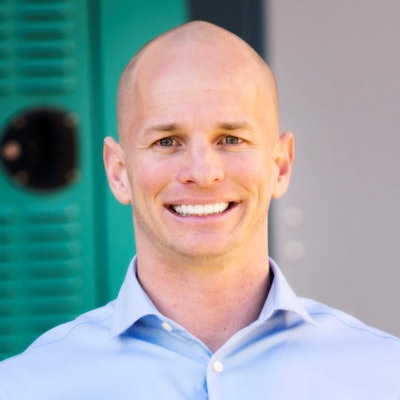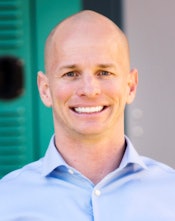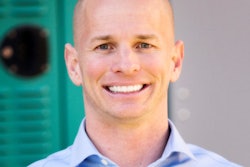
"New year, new you." We've all heard that one before, right? Well, in a year like 2020, we'll happily take a new year and hope that 2021 brings new opportunities and a return to normalcy, whatever that might look like.
For dental practices, 2021 offers some real growth potential for practices and team members. With so many incredible new ways to connect with and care for patients, now is a great time to be in dentistry. This doesn't mean there aren't challenges ahead, including the rigorous efforts you are making to recover from the pandemic and to ensure your patients know they're safe when visiting you for care. However, for practices that want to reach new levels of performance, now is your moment.
 Curtis Marshall.
Curtis Marshall.So, if you want to set your practice up for a great start in January, you've come to the right place. Here are some proven ways you can kick off 2021 with real momentum.
'Clean up' your hygiene schedule
Every dental practice is built on the foundation of its hygiene department. Hygiene drives production for the entire practice and is critical to the health of both patients and the practice itself. All this being true, how healthy is your hygiene department? Is it performing optimally, or is it time for a checkup? For instance, most practices assume that a high percentage of their patients are scheduling their next hygiene appointment before they leave the practice. Not so! You may be surprised to learn that, on average, less than 50% of patients schedule their next appointment before leaving their dentist's office.
This is obviously not good for the patient or your practice, right? But what can be done to fix it? Here are three steps to get you started in the right direction:
- Determine where you are currently: This shouldn't be too difficult. Simply track the number of hygiene appointments you complete each day and divide that number by how many of those patients schedule before leaving. This will tell you what your hygiene reappointment percentage is. Now you know where you are.
- Set a goal: With the new knowledge you've just acquired, establish a goal to improve. Don't make it too huge of a leap. Even 5% to 10% improvement can make a major difference. This is going to be your focus for at least the next few months, so take your time.
- Involve everyone: This is the fun part! Share your goal with your team, especially your hygiene department, and discuss ways you can all work toward success -- and make it fun! Perhaps you could plan a big celebration or create an incentive of some kind when you reach your goal. The most important thing here is to include everyone in the effort.
Supercharge patient payments
How do you currently collect payment from your patients? At the time of treatment? With patient financing, mailed statements, or text-to-pay?
To better understand the pain of processing and receiving payments, we recently surveyed several hundred dental practice owners, office managers, and practice administrators to learn how much time, effort, and struggle go into this process. Their responses reaffirmed the critical need for a new and better way to handle payments. Below are some of the key results of that survey.
How many hours a week do you spend working on or focusing on collecting patient balances?
- Less than one hour: 15%
- One to three hours: 22%
- Three to five hours: 21%
- More than eight hours: 26%
What is the most time-consuming part of collecting patient balances?
- Running reports: 2%
- Identifying patients with a balance: 6%
- Contacting patients (i.e., statements, phone calls, text, etc.): 65%
- Training staff members to assist: 6%
- Processing payments/depositing funds: 3%
- Tracking collection efforts: 8%
- Updating ledger/reconciliation of accounts: 10%
What is the primary method your practice uses to collect patient balances?
- Mailing paper statements: 62%
- Phone calls: 17%
- Text messages: 7%
- Emails: 3%
- Other: 9%
How many attempts, on average, does it take to contact and collect from patients after they have left your practice?
- One to two attempts: 21%
- Two to three attempts: 39%
- Three to four attempts: 28%
- Five to six attempts: 3%
- More than six attempts: 7%
Would you be surprised to learn that more than 70% of patients would prefer to pay their bill via text, and yet less than 20% of dental practices currently offer this option? Even more concerning, 65% of patients would consider switching dental practices to one offering a better payment experience. To be clear, this isn't a momentary trend. Patients absolutely want options when paying their bill, and they are even willing to switch dentists, if necessary, to obtain those options.
Schedule to goal
Here's a quick one-question quiz for you: What should you do when you have an appointment cancellation or no-show? The obvious answer? Fill the hole! Actually, not so fast.
Although you should certainly do something about that opening, there is a better approach than simply scheduling the first person who says "yes." It is called "scheduling to goal" -- and it's just what it sounds like. Instead of just filling an opening, you identify the patients who fit a previously determined criteria and then strategically reach out to them to see if they are available to come in.
This may sound like more work, but that extra effort will more than pay off when you make one successful call to a patient needing a crown placed versus three to five (or more) patients who may or may not even answer the phone, let alone agree to come in. We'll talk more about how to find these patients, but the point here should be clear: Dental practices that schedule around their production goals are much more likely to reach those goals than practices that randomly call a list of patients and hope for the best.
I'll cover more thoughts on different areas of the practice in part 2 of this series, which will run tomorrow (Thursday).
Curtis Marshall is the director of partner operations for Dental Intelligence.
The comments and observations expressed herein do not necessarily reflect the opinions of DrBicuspid.com, nor should they be construed as an endorsement or admonishment of any particular idea, vendor, or organization.



















